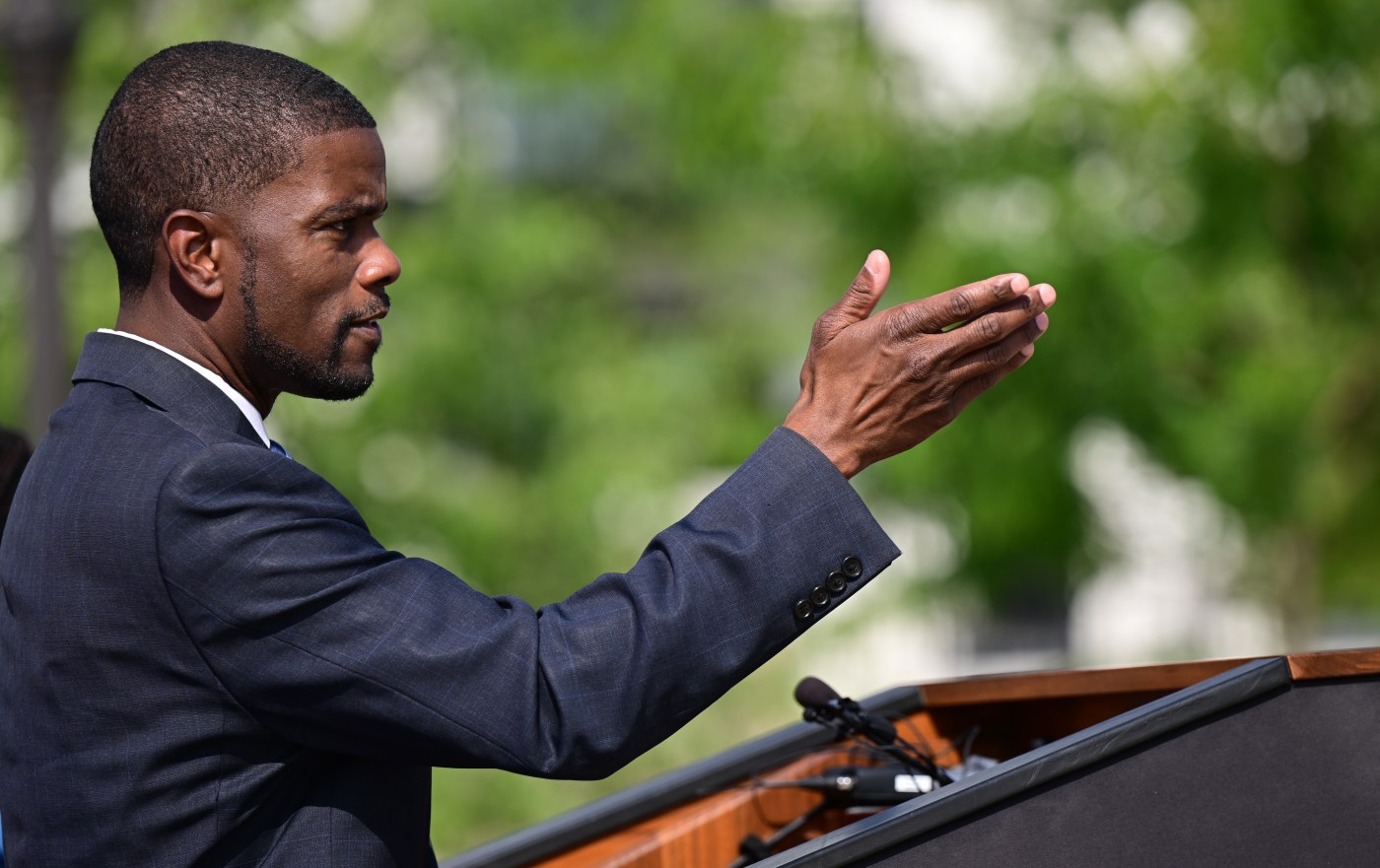
Medical debt relief in St. Paul: How will it work?
Working through at least a handful of hospitals and health care providers, St. Paul is poised next year to cancel out $110 million in hard-to-collect medical debt held by some 43,000 city residents, a first for Minnesota.
To purchase the debt, the city will use $1.1 million in unspent federal relief money from the American Rescue Plan, congressional funding that bailed out cities and counties during the pandemic. Every $1 will buy $100 in “dormant” or “terminal bad debt” for qualifying residents, allowing a nonprofit partner to zero out the debt entirely.
“It’s difficult to go back to a hospital where you know you owe $1,000,” said Keith Hearle, a coordinator with RIP Medical Debt, the New York-based nonprofit overseeing debt relief efforts in some 30 cities and counties. “We get testimonials back from people that we’ve helped. You can’t imagine the amount of relief people feel when some of these medical debts disappear.”
The $1.1 million in funding, included by St. Paul Mayor Melvin Carter in his 2024 budget proposal, was narrowly approved on Dec. 6 by the St. Paul City Council, which voted 4-3 to deny a request by council member Nelsie Yang to put the spending on hold for more discussion. Yang said the city has other priorities, including helping Catholic Charities fund its homeless relief work downtown, or offering higher wages to city workers.
On the campaign trail approaching the November election, “I very clearly heard many other ways that we could be using pandemic funding,” Yang said, adding later: “This is debt that is not being chased after anymore. … Corporations could just choose to cancel the debt in the first place.”
Debate over the policy
Others called medical debt far afield of the core mission of city government.
“It’s so random,” said council member Jane Prince. “We have partners in the city of St. Paul, between the county, our public health department and our really wonderful nonprofit health care community to find ways to address this.”
In Milwaukee, the Milwaukee County Board of Supervisors recently quashed a partnership with RIP Medical Debt aimed at eliminating $153 million in medical debt after medical providers said their charitable care programs could accomplish the same goals.
But St. Paul council member Mitra Jalali said it was appropriate to spend one-time funds on a one-time fix.
“This is one-time federal money, and we’re looking for ways to help us recover from the pandemic … (such as) helping people pay medical bills, many of which were accrued throughout the pandemic,” she said.
Added council President Amy Brendmoen: “I think it will be very meaningful for the people that it touches.”
Pandemic funds
The “Medical Debt Reset Initiative” will use unspent federal American Rescue Plan dollars that were originally set aside by the city for fund administration. During the pandemic, the city was awarded $166.7 million in state and local fiscal recovery funds through the American Rescue Plan Act, all of which has been budgeted toward specific spending items.
The city’s allotment must be designated for spending by the end of 2024 and expended by the end of 2026.
The mayor has noted that people of color are overrepresented in the ranks of residents holding medical debt, which can impact health care access and budgets for food and housing.
“From expanding our public safety efforts to erasing millions in medical debt, this budget makes bold investments in our future while maintaining the discipline behind our city’s perfect credit rating,” said the mayor on social media following the city council’s 6-1 budget vote last week. “Robust community engagement and conversation ensured our budget reflects our shared values, and I appreciate the city council passing it.”
Here’s an overview of how the medical debt relief will work:
The premise
RIP Medical Debt, a national nonprofit, buys off hard-to-collect debt from hospitals and health care providers for pennies on the dollar, or $1 for every $100 in debt, and then cancels it out entirely. The hospital gets something, which is better than nothing, and the patient is freed from their debt burden.
According to RIP Medical Debt, nearly half of U.S. adults have delayed or skipped medical care due to high costs, and in some two-thirds of personal bankruptcies, individuals cite medical debt as a leading cause.
Surveys of Los Angeles County residents found that existing medical debt was a disincentive toward returning to the hospital, and some providers have been accused of turning away patients with delinquent accounts.
Following a New York Times story this summer, Allina Health in Minnesota said it would no longer block patients with long unpaid bills from making nonemergency appointments.
Which hospitals plan to participate and who qualifies?
Allina, HealthPartners, M Health Fairview and Children’s Minnesota have agreed to work with the city to identify uncollected medical debts held by St. Paul residents earning no more than four times the federal household poverty guidelines (about $120,000 for a family of four), or who have a particularly large medical debt relative to their household income.
RIP Medical Debt also will work with community health centers and large physician practices, and possibly others as funding allows.
In St. Paul, “you guys have a head start in comparison to other cities and counties that are doing this work, because the hospitals have already stood up and said, ‘Yup, we’re doing this work,’ and that’s thanks to the mayor,” Hearle said.
“If a hospital decides not to participate, then that means we’re not going to be able to look at those accounts,” he added. “We don’t take every account. We look at only those folks who have financial hardship.”
Because RIP Medical Debt often adds its own funds, there’s sometimes spillover, and even some patients who do not live in the target city may get their debt forgiven.
Who holds the debt?
The vast majority of the debt is held by hospitals and their physicians’ groups.
A hospital may attempt to collect medical debt for six to nine months or more before it’s sent to a collections agency. Even then, the hospital typically still owns the debt, which the collections agency tries to collect on its behalf. Some providers across the U.S. sell debt outright to commercial debt buyers, but “we don’t yet know if the providers that serve St. Paul residents have done that,” Hearle said.
What kind of debt are we talking about?
RIP Medical Debt acquires and cancels accounts that no longer are in active collections. In other words, the hospitals and third-party collections agencies have tried to collect payment but the accounts remain “dormant” or unpaid in “terminal bad debt status.”
Would these debts otherwise go on credit reports?
Since 2021, Minnesota hospitals have maintained an agreement with the state attorney general’s office not to report uncollected medical debt to credit reporting agencies. That’s unusual, Hearle said. In other states, RIP Medical Debt requires medical providers to remove any adverse credit information from a patient’s credit file as a condition of payment.
That said, many patients who fall behind on payments sometimes put medical debt on a credit card or obtain some other form of loan, and then fall behind on that loan, which can impact their credit.
“Indirectly, medical debt can travel onto credit reports that way,” Hearle said.
Don’t hospitals have charitable funds that cover dormant bills?
While hospitals maintain charitable funds for patients, Hearle noted that not everyone who might be eligible for financial assistance actually applies, and some patients who may not have qualified when they received services find themselves in financial hardship long afterward.
“Sometimes the finances of a household will go south maybe two or three years after they got medical care,” he said. “The hospitals don’t go back and look at accounts that are maybe three or fours year old. That’s what RIP is doing.”
How do residents apply for medical debt relief?
The short answer: they don’t. RIP Medical Debt works directly with hospitals and providers to identify qualifying accounts.
Residents will be notified by mail about specific medical debts once they’ve been acquired and canceled. They do not apply for this type of relief directly.
How quickly will qualifying St. Paul residents see their bills paid?
Now that funding has been appropriated, the next step is for RIP to enter into a contract with the city. Work with the medical institutions and providers has already started.
“It’s not impossible that a first batch of letters could be sent to St. Paul residents who have qualified for medical debt relief in the first half of 2024,” Hearle said.
How is RIP Medical Debt funded?
The 501(c)(3) nonprofit, which has offices in New York, Washington, D.C., and elsewhere across the country, receives donations from private philanthropic donors, individuals and faith-based organizations. Philanthropist MacKenzie Scott donated $50 million in 2020 and another $30 million in 2022.
What other cities and counties have participated?
Across the country, community-led campaigns to cancel medical debt have been run by churches and faith groups, nonprofits and even student associations.
RIP Medical Debt has been particularly active in Michigan and Ohio, partnering with the city of Toledo, a mega-church in Cincinnati and Oakland County, Mich., among some 30 cities and counties.
Cook County, Ill. — RIP Medical Debt’s first large-scale government-funded initiative — set up a website with frequently asked questions: tinyurl.com/CookCountyMedicalDebt.
Related Articles
Ultralight outdoor gear store in St. Paul finds success uplifting small businesses
Joe Soucheray: A unifying theme? Flag that as wishful thinking
This updated ‘Peter Pan’ will still delight Ordway Music Theater audiences
Met Council backs real estate in Highland Bridge, University Avenue, East Seventh, Maplewood
Stage 1 of new Midway development: A giant loon at St. Paul’s University and Snelling avenues


